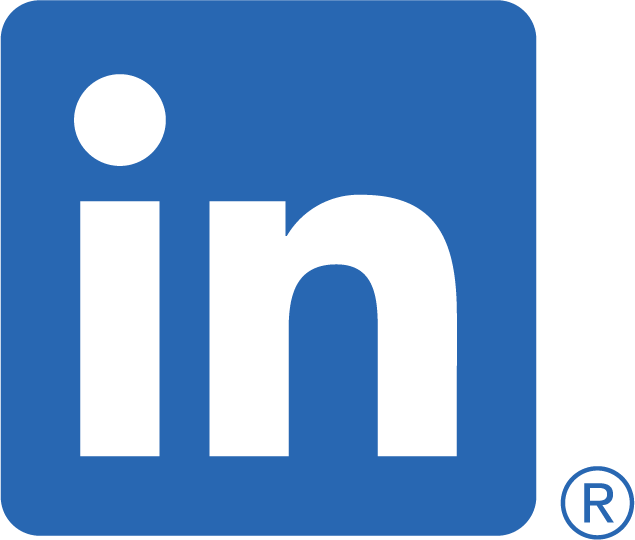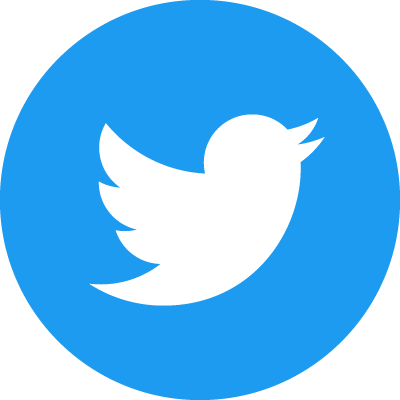At Leet Resumes, we write great technical resumes for free for experienced technology professionals (2+ years professional experience, US & Canada based only).
We believe in being transparent, open, data-driven, and helpful. So we’ve created this documentation on what makes for a great technical resume, our methodology, and why this produces better outcomes for our users. In this documentation, we’ll cover the basics of your resume content, format, and purpose, and link to other blog posts that provide even greater detail on specific topics.
The topics we cover in this documentation are:
- Purpose
- Data-driven Approach
- Why Numbers are So Important
- Structure
- Contact info
- Professional Headline
- Professional Summary
- Work Experience
- Education
- Technologies
- Honors, Awards, Personal, Projects, and Other
- Handling Difficult Situations
- Summary
Purpose
The purpose of your resume is to generate interview requests. And that’s it.
A resume, by itself, can’t get you hired, doesn’t get offer letters, and isn’t the sole form of contact you’ll have with an employer during an interview process.
No, a resume exists to get you offers to have an introductory interview, often called a phone screen, or video screen. And we measure the success of a resume by how many interview requests of what quality it can generate.
Data-driven approach
Data should always drive decisions. At Leet Resumes, our Founder has been studying resumes and their success for twenty years. He published the groundbreaking study using eye-tracking equipment to determine that recruiters spend only 6 seconds to do a first scan of your resume. He’s published Amazon bestsellers on resume writing and interviews.
We take the same data-driven approach to writing your resume. We don’t have any preconceived notion about what works or why, we’re simply interested in following the research, doing the AB tests, studying the behavior of resume readers, interviewing the CEOs and technical experts at the world's largest resume parsing companies, to find out what works best in technical resumes. And that’s the basis for our recommendations in this documentation.
We eschew reliance on anecdote, personal preference, pet peeves, and urban legends about technical resumes. We all have former co-workers, bosses, classmates, and peers who swear by this recipe or that format for a resume. But unless there’s large-scale data behind it, it’s nothing but a hypothesis or conjecture.
Even someone who has screened technical resumes at a very high volume at a prominent tech employer can only comment on their behaviors, not the aggregate behaviors of employers across technology in the US and Canada. While we respect that every employer or resume reader has their individual choices or personal tastes, we strongly prefer basing our resume recommendations on aggregated data.
Why Numbers Are So Important
In addition, by data-driven approach, we mean that your resume should be data-driven. The better you are as an engineer / technology professional, the more important it is to share the results of your success. If you’re good, sharing the data is going to set you apart from the other resumes and get you the interview request first.
And that’s why numbers are so important. To get the interview, it helps to stand out. To stand out, you need to show that your work stood out. To show that your work was better, numbers are the most effective way to tell the story.
When comparing two resumes, the one with numbers wins. “Responsible for load time on the consumer-facing website” is not as effective as “Reduced latency 54% on the consumer-facing website, dropping loadtime from 700 ms to 322 ms.” We see it time and again that the resume with better numbers is the resume that gets the interviews.
Structure
The structure of a great technical resume is reverse-chronological order, with contact info at the top, followed by professional headline and professional summary, followed by work experience, education, and technologies. Honors, awards, projects, etc., are added to the final section.
For someone with 10 years’ experience or less, one page is appropriate. For a technology professional with more than 10 years of experience, two pages are the norm, except in the case where you’re an individual contributor and prefer to stay at a lower level for work-life balance or other reasons. Technology professionals with truly high-level executive management experience running tech organizations of 1,000 people or more may consider a three page resume.
Contact info
Name, email address, and location are required. It’s very common for technology professionals to have personal domains for their email addresses. You should make sure this email address is professionally appropriate. For example, haX0r@greenzombie.com will seem a professional choice to only certain kinds of employers. The safest bet is typically a version of fristname.lastname@gmail.com or firstname.lastname.2021@gmail.com .
It’s better to include phone if possible. Google Voice is an attractive option for those who prefer to send callers straight to voicemail. Github, if active, should be included. LinkedIn, which is a subset of your resume’s data, should not be included.
For location, you should indicate your desired location. For example, if you're living in City A, but your spouse has already accepted a job in City B, and you're definitely moving there in 2 months, use City B as your location.
Likewise, if you prefer to work remote, then list your location as "Remote."
Professional Headline
The purpose of the resume is to get picked out of the resume pile for an interview request. The purpose of the Professional Headline is to summarize your resume for the person reading it, in a very brief phrase of 3-4 words. This summary, when it matches with what th reader is searching for, is effective at getting a longer first look. “Accomplished Senior Software Engineer”, or “Dedicated DevOps Professional” attract the attention of readers who are looking for just that.
Professional Summary
Your professional summary is a scannable section at the top of your resume that makes it very easy for your resume reader to understand your professional career. For someone earlier in their career, we typically include two lines: your four desired job titles and your capabilities. For professionals with 10+ years of experience, we add four personal achievements, and career highlights.
Four desired job titles. “Explicit is better than implicit” says the Zen of Python, and we agree. While it may be entirely obvious to you what job titles you would be interested in interviewing for, it is not obvious to your resume reader. Truthfully, it is often the case that your future boss spoke to someone yesterday with a background similar to yours, who wanted to do something completely different. Being explicit about the job titles you are interested in interviewing for makes it easier to select your resume for an interview.
Four capabilities. To support those job titles, we show four relevant capabilities that indicate to the resume reader that you are at the appropriate level. These are typically two- or three-word phrases such as “Data Mining”, “Deep Technical Expertise”, “Database Hardening”, “Performance Tuning”. These should be your most impressive and most relevant to the job titles above capabilities.
Four achievements. At more experienced levels, we’ll include the four most relevant achievements that prove or demonstrate you have the capabilities described above. “Reduced Costs”, “Increased Velocity”, “Excellent Recruiter”, “Team Leadership” are the types of achievements we’ll include on this line.
Career Highlights. At 10+ years’ experience, we’ll include career highlights that show external validation of your professional career. “Promoted 4x”, “CTO Award Winner 2019”, “Los Alamos Distinguished Award Winner”, “15 Peer-Reviewed Publications” are the type of validations we recommend including on this line.
Work Experience
Work experience should be listed in reverse chronological order, most recent experience first. Each experience should include several bullet points describing, with numbers, your achievements in the role -- how and why the company or your team was better because you were there, expressed numerically. Your most recent experience should have more bullet points per year, while your job from 15 years ago might be covered by only one bullet point. It is very important that the job titles you list on your resume are the precisely specific job titles you had at an employer -- no fluffing up your resume by adding a ‘senior’ or saying you were ‘CTO’ if that wasn’t what was on your offer letter or promotion document.
Education
Education is listed with University or College name, followed by location, with the attendance years or graduation date on the same line to the far right. The precise name of your degree is important. No fluffing up the type of degree, the department, or the honors. Do not change a B.A. in History of Technology into a B.S. Computer Science just because that was the department or courses you enjoyed most. This will certainly come back to bite you in a long career.
Technologies
List the technologies in which you are proficient or have a demonstrated competency. Often, it’s helpful to segment into three or four groups of technologies such as “Languages”, “Frameworks”, “Databases”, “Operating Systems”, or whatever is relevant to your field. We typically see around 10 technologies listed by those with two years’ experience, growing to 20-25 technologies at 10+ years’ experience. At 20+ years of experience, technology managers may find this is less relevant to their professional careers and may omit entirely.
Regarding placement of the technologies sections, there remain legitimate differences of opinion as to whether placing it above work experience, above education, or at the bottom of the resume document is superior. We have opted, on balance, for its placement at the end of the document, but alternative placements are acceptable. We hope to continue our study of this question to produce a more definitive answer in the future.
Honors, Awards, Personal, Projects, and Other
For resumes that would benefit from honors, awards, side projects or open-source projects, nano degrees or remote learning certifications, or personal information, we list this data after technologies. In order to maximize productive space on the resume, we rename the technologies section to include these relevant elements.
Handling Difficult Situations
Uncompleted degrees, extremely short work stints, periods of no work at all -- these uncommon but difficult situations can make reverse chronological resumes difficult to complete. First, it is never appropriate to use a functional resume -- these raise red flags, and draw more attention to your difficult situation, rather than less.
The goal of your resume is to generate interviews, and you’re free to do this however possible, so long as you remain truthful in any information you present. If you can omit the difficult situation, that is usually best, as it requires the least explanation, and presents the fewest distractions.
If, for reasons of chronological continuity, it is not possible to omit, we’ll recommend providing the briefest possible explanation and moving on -- “Coursework completed”, “Brief stint in new industry ended after a short time”, “Parent company bankruptcy forced closure of out unit shortly after I started.” While you will be tempted, there is no benefit, at all, to longer explanations, and, honestly, resume readers have seen enough to know there are always ups and downs in a career.
Summary
This documentation on Leet Resumes’ process for writing free technical resumes supports our beliefs in being transparent, open, data-driven, and helpful. We hope you’ve found it useful. If you have any questions, please email us at help@leetresumes.com !







